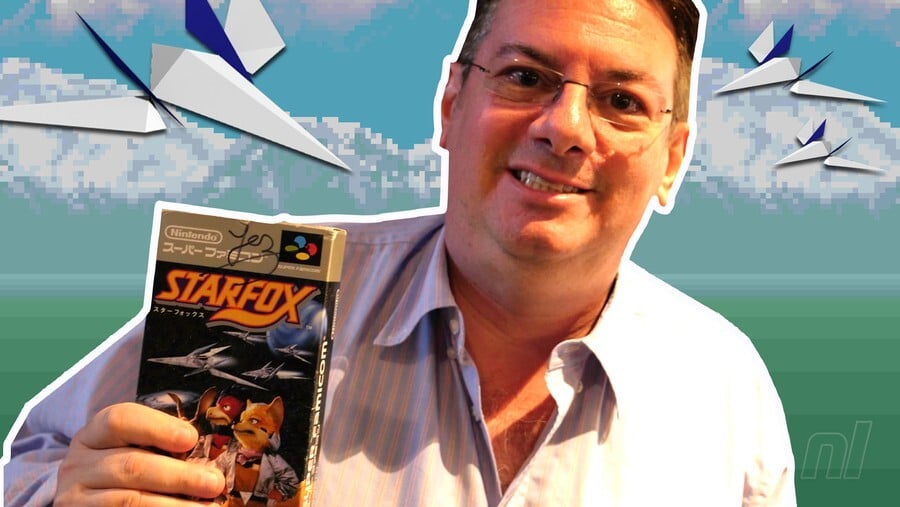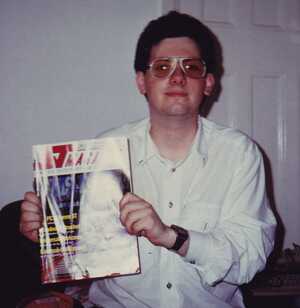
Jez San occupies a pretty unique place in the world of video games. He founded his company, Argonaut Software, while he was still a teenage schoolkid, and his free-roaming 3D shooter Starglider would become a critical and commercial smash-hit, paving the way for a relationship with Nintendo which would spawn the Super FX chipset, as well as titles such as Star Fox and Stunt Race FX. Argonaut would go on to become one of the most notable software and tech firms in the UK, working with companies such as Philips and Apple, before succumbing to the effects of a changing market in 2004. San would establish PKR, one of the UK's first online casinos, in 2005, and following a period as an angel investor, is currently working in the realm of gaming cryptocurrency with FunFair.
We were lucky enough to sit down with San and discuss his amazing career, working with Nintendo, creating amazing 3D hardware and much more besides. Grab yourself a hot beverage and enjoy.
Nintendo Life: How did you get started in the games industry?
Jez San: I got my first computer quite early – like, twelve, thirteen years old. A TRS-80, Level II. Maybe 16k. A whole 16k! It was black and white. This was in ’77, so it was before the Spectrum and C64. I learnt to program in Basic in a matter of days and then moved on to Assembly; because the processor was so slow, you couldn’t really do anything in Basic, so you had to learn Assembly to do anything. My first few programs were utilities. In the old days, printers printed in blocks, with a dot matrix. So I did a driver that intercepted the printer output and turned it into handwriting. That was my first ever program, and then I started writing simple games. I got a BBC computer and a Commodore 64, and some friends and I built a development system called PDS – "Programmers’ Development System" – which allowed you to program the Commodore 64 remotely, from the BBC.
I was working on a 3D shooting game which, at the time, was based on Star Wars, and was actually based on the Star Wars coin-op, and I tried to get the rights to the Star Wars coin-op... I didn’t let them know I was some young kid
That would have been around the time that Argonaut was officially founded?
Yeah. I started Argonaut in September ’82 but the first game actually came out before then, Skyline Attack. It was credited to Argonaut Software but actually it probably came out before Argonaut was actually formed. That was also programmed with a few friends, as well.
Actually, before that, on the BBC computer, I did copy protection, because there was a big piracy problem in the industry back then – there still is today! I designed a disc copy protection system that made it hard to copy the disks; it was also my first attempt at doing what’s called 'dual format'. Because in those days, the disc drives were either forty track or eighty track, and you had to buy a disk that was either forty track or eighty track. My disc format worked on both, so you could boot the disk on forty track or eighty track. I sold that copy protection to AcornSoft.
That was actually my first entry into computer games, because I had met, at a dinner party, Jacqui Lyons, who was my agent. And I was the precocious sixteen-year-old that showed up on her door and was invited to dinner. I met some very important people at her dinner party, and one of the things that came out of that was the people who created Elite on the BBC Micro – David Braben and Ian Bell – they needed to do a Commodore 64 version. They didn’t know how to program the C64, and they didn’t have any development tools, so we consulted with them and sold them our PDS, which allowed them to develop Elite on the C64. Part of the terms of my deal was that I got to make a game with Rainbird, one of British Telecom's games studios – British Telecom also owned Firebird, which published Elite, you see. I was working on a 3D shooting game which, at the time, was based on Star Wars, and was actually based on the Star Wars coin-op, and I tried to get the rights to the Star Wars coin-op.
The 1983 Atari wireframe one?
Yeah. It looked like Battlezone. It was my favourite coin-op game, at the time, and I was trying to get the rights to that from Atari. I didn’t let them know I was some young kid. But it proved difficult to get the rights, so I then migrated the game to be highly influenced by Star Wars, but an original game, with an original story. And that was Starglider, which was my first big game. That all happened after me helping to get Elite ported, and that got me my first break to do my own game stuff.

Didn't Starglider come with a book?
A novella, yeah. My agent, Jacqui Lyons, she was originally a very successful literary agent. So she had a number of book authors on her roster and I was maybe the second game creator signed up. But that meant that she had access to really good novel writers.
They really filled the gaps, those novels. Despite the growing graphical complexity of video game, there were still a lot of gaps in the narrative that you wanted to fill in.
Yeah. And it kind of worked both ways, because I had ideas about how the game was going to work and I would tell James Follett, the author, those ideas and that would set him off. And then he would start going on a tangent like ‘oh, then you could have tunnels in the planet that would let you get from one end to the other end, using gravity and…’
So it was symbiotic?
It was symbiotic, yeah. So I was telling him my game ideas, so then he was coming up with story ideas, and then I could integrate those into the game and vice versa, so it did work really well.
Is it true that you made £2 on each copy sold?
It was probably like £1.95, or something like that. It was a good deal because Rainbird was very fair in that they gave a royalty to the author, based on the retail price, not on the wholesale price, or discounts. So it meant that we got a consistent amount. Jacqui Lyons negotiated some very good deals, one of which was good royalties but another, which was very important, was good crediting and retaining the copyright.
At a time when that wasn’t the norm, presumably?
Absolutely that wasn’t the norm. Unfortunately, it’s gone the other way, since then, and it’s become much worse for the authors of games. But, at that time, we had a very fair deal and I was just some kid at home, in my bedroom, writing games. And Starglider sold 300,000, so that was good money for a kid at home.
We had a very fair deal and I was just some kid at home, in my bedroom, writing games. And Starglider sold 300,000, so that was good money for a kid at home
At the time, Braben and Bell were still single developers on their own. People like Archer Maclean and Jeff Minter... they were all on their own too, and I decided I wanted to put all my money into a company and build a team. And so I was one of the first of my peers to actually do that and not keep the money myself and blow it all on a very fast car! I did, later, get fast cars, but at the time I just sunk it all into building the team. And so Starglider 2, and other games, were all built by the team. I was trying to build a studio, rather than just be a single, one-man band and take the profits on my own.
Starglider and its sequel arguably placed Argonaut at the vanguard of 3D gaming. What made you then shift focus from computers to consoles?
It was partly the technical challenge that these consoles were not bitmapped displays. They were character-mapped, and they were designed to be scrolling machines, and they were good at scrolling games. They had a scrolling background and sprites in the foreground, and that architecture didn’t lend itself to doing 3D graphics, where you have to render each pixel individually. So there was a technical challenge – at Argonaut, we loved a challenge. We love proving that it can be done when everyone says it can’t. But also, it was a huge market. Millions and millions of consoles sold – far more than, at the time, home computers.
